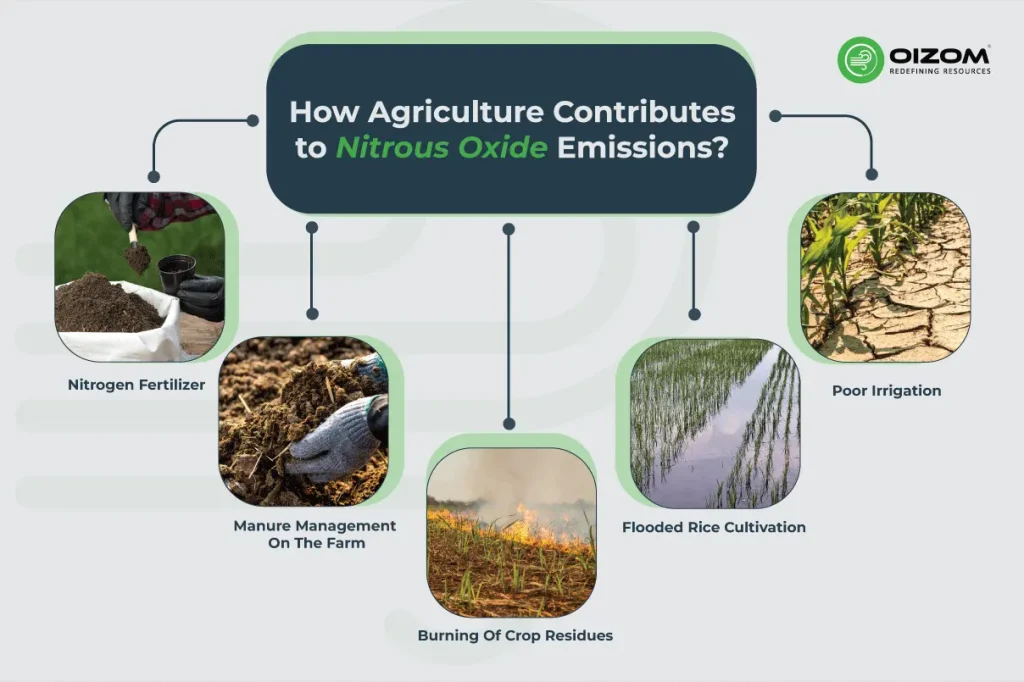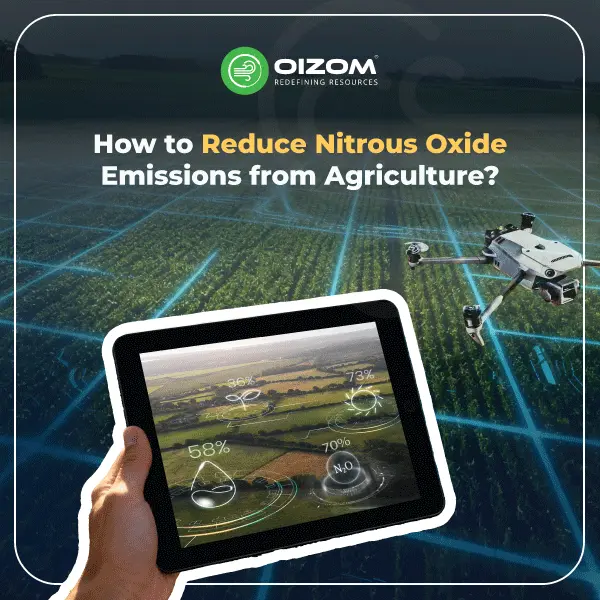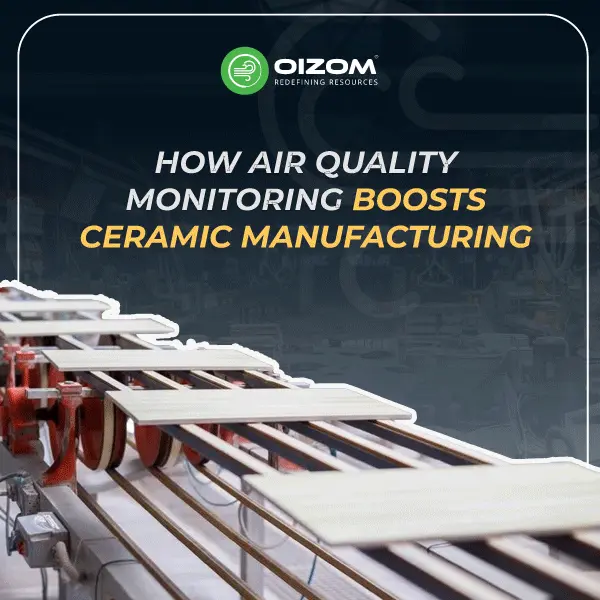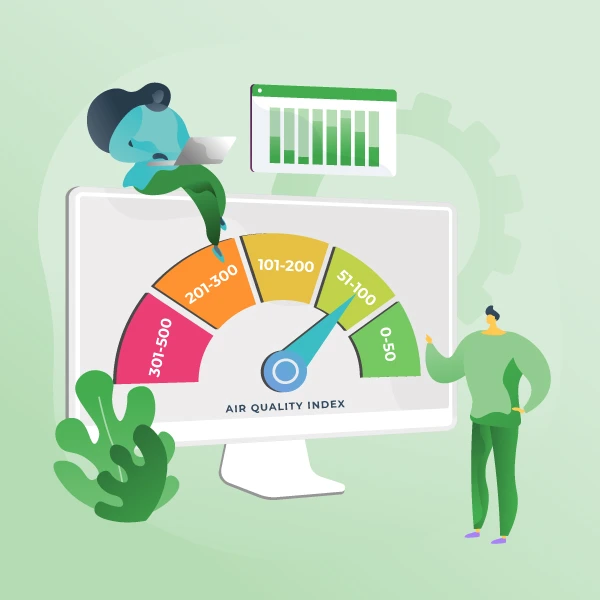Summary
Although nitrous oxide (N₂O) is not in the news quite as much as carbon dioxide, it has been playing a major role in the background. N₂O exists as a product of chemical fertilizers and livestock manure, as well as in the soil. It is 300 times more potent as a greenhouse gas than CO₂ and can persist in the atmosphere for more than 100 years. Beyond heating the atmosphere, nitrous oxide also affects air quality and ozone depletion. N₂O is the greatest opportunity for agriculture to think differently about a climate issue.
This blog explores how enhanced nutrient management practices, precision technologies, and real-time air monitoring can “flip” farms into climate solutions. From site-specific fertilizer applications using GPS technology to soil moisture sensors to sustainably managing land-applied fertilizers, every new agri-tech brings the industry closer to productivity and emissions goals.
Figuring out how and why nitrous oxide is produced is a good start; using that information in practice is how agriculture will become part of the climate solution.
How to Reduce Nitrous Oxide Emissions from Agriculture?
What if the fertilizer that nourishes the planet is also quietly warming it? Nitrous oxide (N₂O), relatively unknown alongside carbon dioxide and methane, is a greenhouse gas that is almost 300 times more potent than CO₂ and can last in the environment for more than a century. Much of it comes from the soil that feeds us, due to fertilizer use, manure application, and intensive farming.
As demand for food grows, so will N₂O emissions. This is an issue that intersects climate change and air quality. The gas traps heat but also influences the delicate chemistry of our atmosphere, leading to ozone depletion in the higher atmosphere and smog in the lower atmosphere.
Addressing the problem requires agriculture to be smarter, relying on an intersection of science, data, and technology to feed us without feeding the climate crisis.
How Agriculture Contributes to Nitrous Oxide Emissions?

Along with natural sources, N₂O is emitted by human-induced agriculture, which accounts for more N₂O emissions than any other human activity (agriculture represents nearly three-quarters of global N₂O emissions). Most nitrous oxide emissions from agriculture stem from the use of nitrogen fertilizer and microbial processes in soil. Because farmers must apply more synthetic nitrogen or organic manure than the crop can absorb, the surplus nitrogen does not increase productivity. It is instead transformed by biological processes called nitrification and denitrification into nitrous oxide gas as a byproduct of microbial activity in the soil, which subsequently leads to N₂O fluctuations in the atmosphere.
Nitrogen fertilizer overuse is a primary source of agricultural nitrous oxide emissions. For example, in the productive regions of the world, such as India and China, and the Midwest of the U.S, the primary urea and ammonium nitrate application rates often exceed the nitrogen that can be absorbed in the crop. The excess nitrogen from urea or ammonium nitrate is not used to enhance productivity; instead, it is converted to nitrous oxide, which is a potent GHG with a warming potential approximately 300 times that of carbon dioxide.
Nitrous oxide emissions can also result from other agricultural practices besides fertilizer. High emissions were found in manure management on the farm, where animal waste decomposed under limited oxygen. Burning of crop residues, flooded rice cultivation, and irrigation can also increase emissions because moisture involvement with organic matter fosters increased N₂O fluxes driven by the chemistry of nitrogen transformation into nitrous oxide. Finally, conditions such as poor irrigation also raised soil gaseous nitrogen (which, in turn, altered soil oxygen levels, thereby increasing the rate of bacteria that promote N₂O).
How Nitrous Oxide Affects Air Quality and Climate?
Although nitrous oxide (N₂O) is often viewed solely as a greenhouse gas, it also affects air quality, atmospheric chemistry, and climate. From a climate change perspective, there is a clear link between increasing N₂O levels and agricultural intensification. Once emitted, it can readily transfer heat, prolonging warming. Nitrous oxide also acts, unlike CO₂ or methane, as a major ozone depleter once emitted into the stratosphere, where it decomposes into reactive nitrogen compounds that destroy ozone.
Regarding air quality, nitrous oxide interacts with other air pollutants, driven by chemical measurements that influence several aspects of air quality. While not a direct threat to human health at ambient concentrations of N₂O, the gas contributes to the formation of ground-level ozone, a pollutant linked to crop and respiratory health issues. In areas with high fertilizer application and livestock production, higher concentrations of N₂O are often observed alongside ammonia and nitrogen oxides (NOₓ). These conditions can result in localized smog and the formation of secondary particulates.
Collectively, these effects highlight the need to regard N₂O alongside CO₂ and methane. It has subtle consequences on both the temperature balance of our planet and the air we breathe every day. Thus, it connects agricultural production and its equally important relationship with climate stability and air quality.
How Air Quality Monitoring Systems Drive Emission Reduction?
Achieving suitable emission reductions begins with accurate measurements. In this context, air quality monitoring solutions for agricultural sites can help measure nitrogen compounds in real time, revealing when and where nitrous oxide (N₂O) emissions peak, often in the days after fertilizer or manure application.
In addition to measuring nitrous oxide, real-time monitoring of nitrogen compounds provides insight into emissions of related gases, such as ammonia (NH₃) and nitrogen oxides (NOₓ), which may indicate soil health and fertilizer efficiency. Collectively, data on nitrous oxide and related gas emissions can provide farmers with scientifically grounded evidence to help them decide how to reduce greenhouse gases and air pollutants associated with agriculture.
With sophisticated platforms such as those being developed by Oizom, this data can guide actions that make invisible emissions measurable progress toward cleaner, more climate-smart agricultural practices.
Effective Farm Practices to Minimize Nitrous Oxide Emissions

Effective nitrogen management is the first step toward reducing nitrous oxide emissions. By using precision fertilization, split applications, and slow-release fertilizers, crops can take up more nitrogen, reducing nitrogen loss as a gas. Maintaining healthy soils also helps reduce emissions. Utilizing cover cropping, crop rotation, and appropriate drainage can limit denitrifying microbes’ activity to a minimum in soils and maintain oxygen balance.
In livestock systems, improved manure handling through composting or biogas production reduces emissions from waste. Optimizing the irrigation schedule will avoid excess moisture that causes gas emissions or enhance water retention. When used together, these simple practices can enhance productivity, mitigate agricultural emissions, and improve climate health.
Technological Innovations Supporting Low-Emission Agriculture
The farming sector is advancing in its ability to manage nitrous oxide (N₂O) emissions through modern technology. The presence of precision agriculture tools, such as GPS-guided applicators, drone-based nutrient maps, and online portals for sharing nutrient recommendations, supports the application of fertilizers only to fields that need them, which mitigates the potential for excess nitrogen in soils. Each of these tools is important to help farmers utilize nitrification inhibitors and enhanced-efficiency fertilizers to slow the conversion of nitrogen in backgrounds and minimize N₂O emissions without compromising productivity.
Additionally, with the emergence of IoT-based soil sensor technology and automated irrigation systems, farmers can maintain ideal levels of moisture and air, and avoid denitrification, which in turn helps minimize emissions. In countries like the Netherlands and Japan, farmers are already using AI-driven nutrient models to calculate statistics for predicting fertilizer application, emission risk, and precision use.
With air quality monitoring devices like those of Oizom engaged with these technologies, a feedback loop can be established to support the agriculture industry on the path to precision, efficiency, and measurement of climate actions.
Next Steps: Adopting Air Quality Insights in Modern Farming
The contribution agriculture makes to nitrous oxide (N₂O) emissions is obvious, but so is its potential to be part of climate and air quality solutions. Low-emission agriculture is already being realized through better fertilizer applications, enhanced soil health, precision technologies, and on-farm monitoring. The next challenge will be taking farmers down the path of low-emission agriculture as the new normal, so that every farmer begins to harness the benefits of data, efficiency, and environmental care in everyday use.
Innovators in monitoring technologies will help agriculture leverage data-informed systems and processes that support remediation and implementation of farming practices that can either enhance food production while improving degradation to the environment, or break agriculture’s dependence on weather.
FAQs:
High nitrous oxide emissions in agriculture are mainly caused by excessive nitrogen fertilizer use and poor soil management that promote microbial nitrification and denitrification.
N₂O emissions harm farmers and communities indirectly by worsening climate change and depleting ozone, contributing to heat stress and reduced crop yields.
Advanced soil sensors, flux towers, and satellite-based monitoring systems help track nitrous oxide emissions from soils and fertilizers in real time.






